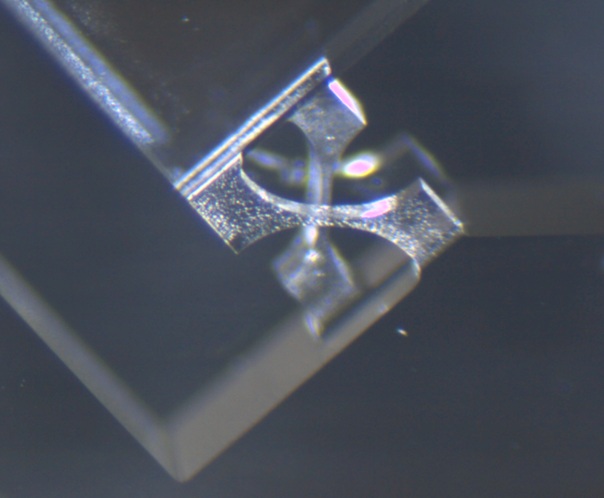Table-top 3D laser printer opens door to new world of small-scale innovation

Related topics
Innovation Advanced manufacturing & processing France Germany Netherlands United Kingdom Switzerlanddate: 20/06/2014
Project: Femtosecond laser printer for glass micr...
acronym: FEMTOPRINT
See also: CORDIS
Contact: Contact
“The idea that extremely small and strong objects made from glass can be produced on your desktop is truly a marvel,” explains FEMTOPRINT coordinator Yves Bellouard of the Eindhoven University of Technology in the Netherlands. “We think this breakthrough can really boost the potential for designing new products reliably and affordably,” he adds.
The printer has a huge range of potential applications – in industry, medicine, computers, research and universities. Among the products it can manufacture are durable memory chips, biochips for medical analysis, “accelerometers” that shut down a hard drive when a laptop falls, microchips used in environmental monitoring devices, and rewritable optical memory devices that can archive critical data in glass for thousands of years.
The printer will free designers and engineers from having to hire outside companies to manufacture their new products. “Now,” says Bellouard, “small companies and research organisations can avoid outsourcing and instead focus on their own designs and ideas.”
The cube-shaped FEMTOPRINT can fit on a table and the laser itself is smaller than a shoebox. It writes patterns on glass in one sweep, quickly and simply, using a low-power laser beam. Pulses from laser are incredibly quick – one every femtosecond, or one-quadrillionth of a second.
“The laser resembles a printing process in the sense that it turns the material that we are working on into something else,” explains Bellouard. “With FEMTOPRINT, these objects can be fabricated rapidly at a much lower cost than was previously possible.”
In December 2013 the FEMTOPRINT team announced that a spin-off company of the same name had been set up in Switzerland to produce the printer for the commercial market.
